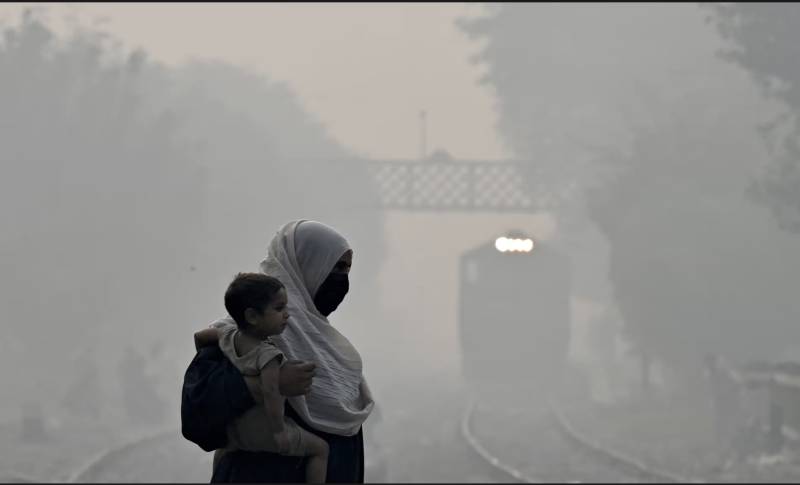
As winter descends on Peshawar, this historical city faces an increasingly severe environmental challenge with significant public health implications: smog. This dense mixture of smoke and fog, laden with harmful pollutants, has become a familiar but alarming aspect of the season. Currently ranked as the second most polluted city in Pakistan, Peshawar contends with dangerously high levels of particulate matter (PM2.5), nitrogen oxides, and sulfur dioxide. These pollutants stem from vehicular emissions, industrial discharges, and the burning of solid fuels, practices particularly common in low-income neighbourhoods. During the winter months, temperature inversions trap cooler air near the ground, preventing pollutants from dispersing and exacerbating the public health crisis.
The air quality crisis is not an isolated incident; it is reflective of a broader trend seen across many urban areas in Asia. South Asia is particularly vulnerable, with cities like New Delhi, Lahore, and Peshawar frequently topping the lists of the world's most polluted cities. Factors such as rapid urbanisation, increased vehicle use, industrial emissions, and the reliance on traditional biomass fuels for cooking and heating contribute significantly to this dire situation.
Recent research from the World Bank and the Food and Agriculture Organization (FAO) underscores the grave health impacts of air pollution, particularly in regions experiencing dry and harsh winters. Studies indicate that exposure to high levels of PM2.5 can lead to increased mortality rates, exacerbation of cardiovascular and respiratory diseases, and reduced overall life expectancy. For instance, a report highlighted that in cities like Peshawar, individuals exposed to severe air pollution are at a 20% higher risk of developing chronic respiratory diseases, and children are particularly vulnerable, facing heightened risks of asthma and developmental issues.
Yet, winter in Peshawar was once a different story. The chill in the air carried memories of early morning mists, the sweet scent of burning wood in courtyard hearths, and laughter echoing down narrow lanes. Those days seem veiled now, replaced by a haze that blurs not just the view but the city's vitality, marking a stark transition that affects both physical health and emotional well-being. Locals have coined the term "sipina tayara", describing the current smog as a "white darkness", where despite it being daytime, visibility is so poor that one cannot see anything clearly.
People in Peshawar have coined the term "sipina tayara", describing the current smog as a "white darkness", where despite it being daytime, visibility is so poor that one cannot see anything clearly.
The health impacts of this environmental crisis are widespread. Vulnerable groups — children, the elderly, and those with pre-existing respiratory or cardiovascular conditions — face increased risks. Hospitals report a surge in cases related to asthma, bronchitis, and other pulmonary conditions, stretching healthcare services to their limits. The reduced visibility associated with smog also leads to heightened road traffic incidents, underscoring the urgent need for measures such as lowering speed limits, enforcing the use of fog lights, and disseminating information on safe driving practices to protect commuters and reduce accidents.
Peshawar's air quality crisis is driven by multiple factors: the reliance on older, inefficient vehicles, unchecked industrial emissions, and the widespread use of biomass for heating. Addressing this crisis requires more than temporary fixes; it demands long-term strategies and comprehensive policy reforms. Authorities should implement stringent emission standards, promote cleaner transportation technologies, and upgrade public transit systems to reduce reliance on private vehicles.
Investments in electric transport options and real-time air quality monitoring systems can also make significant inroads into mitigating pollution levels. Additionally, expanding urban green spaces could provide much-needed natural filtration for pollutants and foster a healthier living environment. Green spaces not only improve air quality but also promote community well-being by providing residents with recreational areas that encourage physical activity and social interaction.
On an individual level, households can adopt measures to mitigate exposure to smog. Using air purifiers, maintaining proper indoor ventilation, and wearing protective masks during high pollution periods are practical steps that can reduce health risks. It is crucial for vulnerable individuals to be educated on recognising the early signs of pollution-related health problems and to be encouraged to seek timely medical care when necessary. Strengthening healthcare facilities to manage the seasonal rise in respiratory illnesses and conducting community outreach programs that disseminate crucial health and safety information can provide added resilience against the health impacts of smog.
It is crucial for vulnerable individuals to be educated on recognizing the early signs of pollution-related health problems and to be encouraged to seek timely medical care when necessary.
In addressing these challenges, an emphasis on sustainable urban development is critical. Prioritising public health, fostering environmental stewardship, and enhancing climate resilience can pave the way for a cleaner, healthier Peshawar. The once-clear winter skies may seem a distant memory, but collective action offers a path to recovery and sustainable progress.
Moreover, the international community must recognise the shared responsibility in combating air pollution. Collaborative efforts, such as initiatives aimed at engaging cities worldwide in sharing best practices and implementing effective air quality management strategies, are essential. Countries in Southeast Asia, facing similar challenges, have begun adopting measures such as stricter emission controls and promoting public awareness campaigns about the dangers of air pollution.
As we reflect on the air quality challenges faced by Peshawar, it becomes evident that solutions must be multi-faceted, involving governmental policy changes, community engagement, and individual action. The collective will to address air pollution can transform the smog-laden winter skies into a future where clear air is not just a dream but a reality for all.
"When winter whispered in silken breaths, it cradled life in crisp embrace; now muted under the shroud of smog, it pleads for change with earnest grace."

